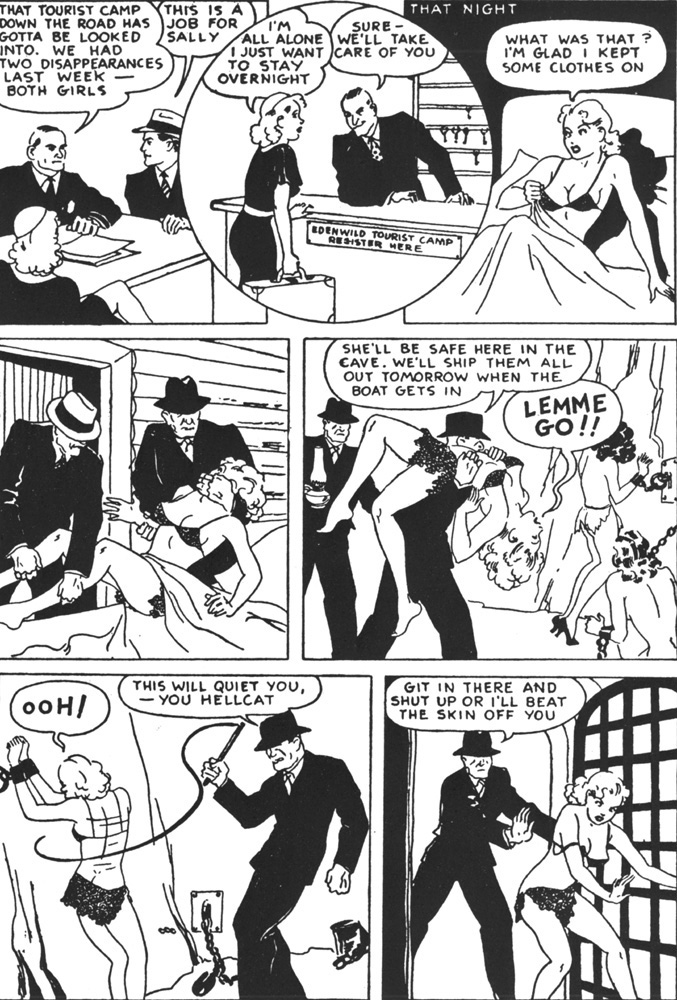
Jane was syndicated across the globe by King Features and appeared in the U.S. Forces’ magazines Stars and Stripes and Round-up. Despite having to cover up many of his racier strips for the more prudish American audience, Pett’s success at raising the morale of British troops inspired American cartoonist Milton Caniff to create a spin-off series from his popular Terry and the Pirates newspaper strip.
Male Call was created exclusively for U.S. military publications during World War II and ran from January 24, 1943 to March 3, 1946. Originally the main character was to be Burma, a beautiful adventuress from the Terry… series, but Caniff slowly introduced a new character, Miss Lace, who eventually took center stage. Lace was every inch the pin-up vamp, reducing enlisted men to drooling wrecks.
Male Call’s demographic meant that the content was racier than Caniff would have got away with in the mainstream American civilian press. Distributed by the Camp Newspaper Service, the strip appeared in over 3,000 newspapers, the largest number of publications in which any single comic strip has appeared.
After the war, a comic book featuring another dizzy blonde dame, G.I. Jane, appeared. Not to be confused with its British cousin, G.I. Jane was created by Hal Seeger and drawn by Bill Williams. The comic featured the by-now familiar narrative of the sexy shenanigans of a gal G.I. who could turn all the enlisted men to jelly. The comic was published in 1953 by Stanhall, a company that specialized in producing comics aimed at an adult male audience, including titles like The Farmer’s Daughter. Based on classic, bawdy jokes, every cover had the tagline: “She was only the farmer’s daughter, but…” as endless traveling salesmen queued up to bed the eponymous heroine.
It appeared as though the back streets of erotic prints, saucy postcards, Tijuana bibles, and pin-ups were now merging into a giant superhighway, spanning America from coast to coast. Erotic comics were on a road trip from which they could no longer turn back, one that would force them to stop at every seedy motel along the way and expose the tacky underbelly of Americana for their lascivious, voyeuristic audiences to gawk at.
Sally The Sleuth, by Adolphe Barreaux, originally appeared in spicy detective stories in 1934. Many of her adventures involved her being tied up and feeling the lash ofthewhip.
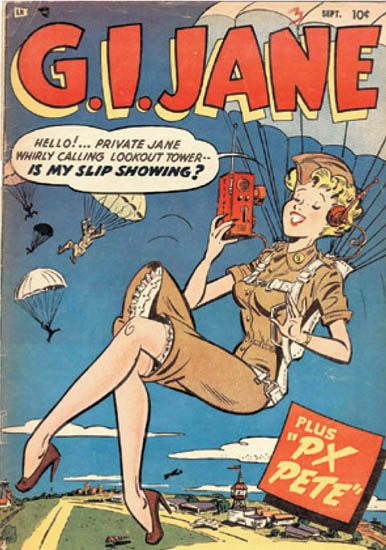
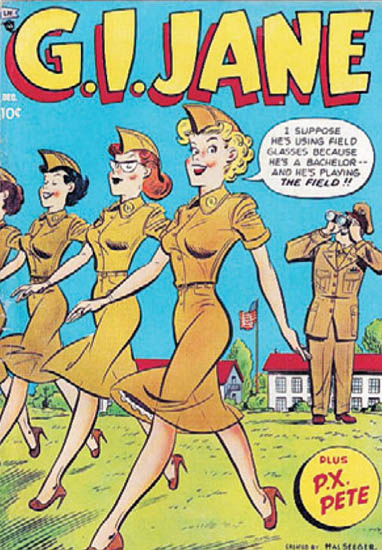
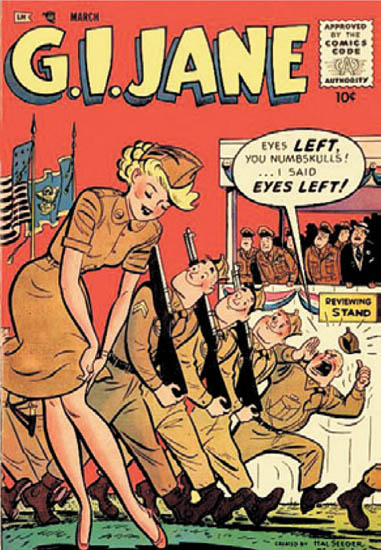
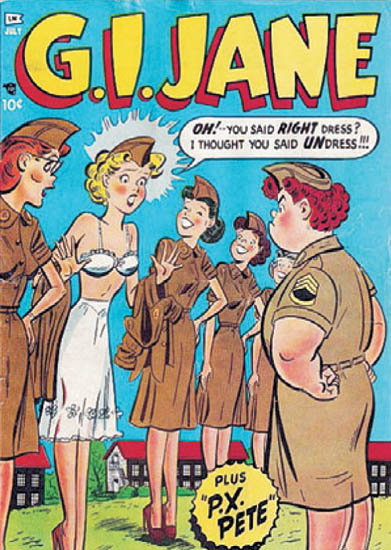
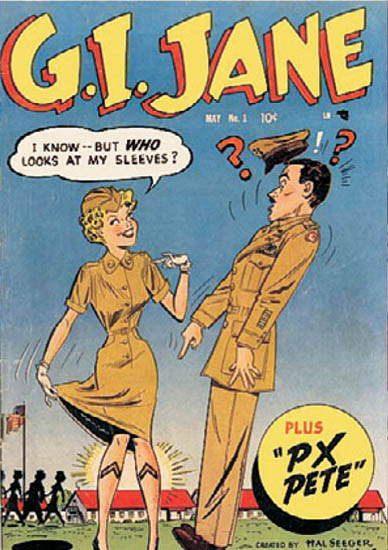
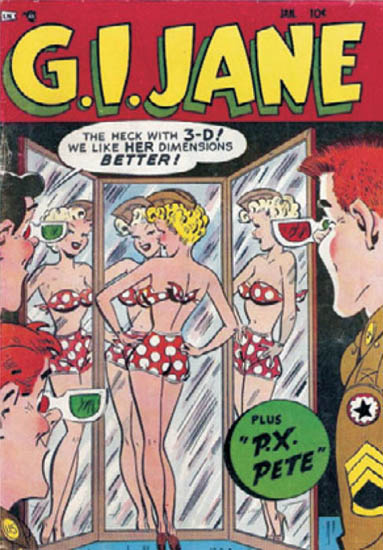
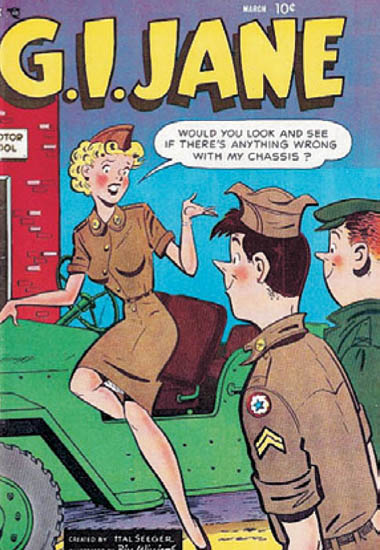
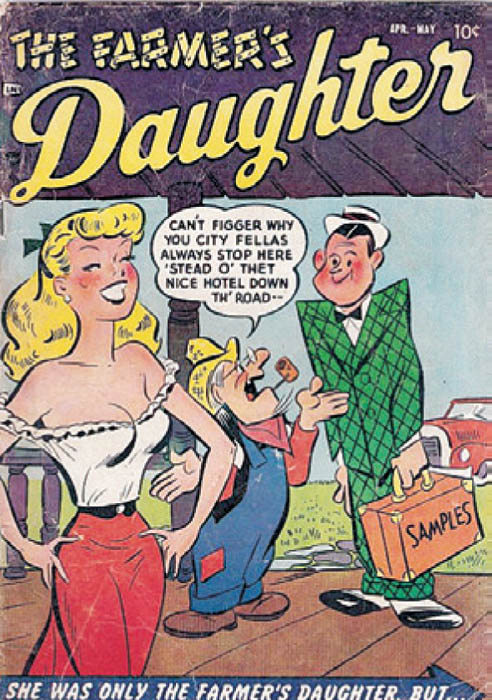
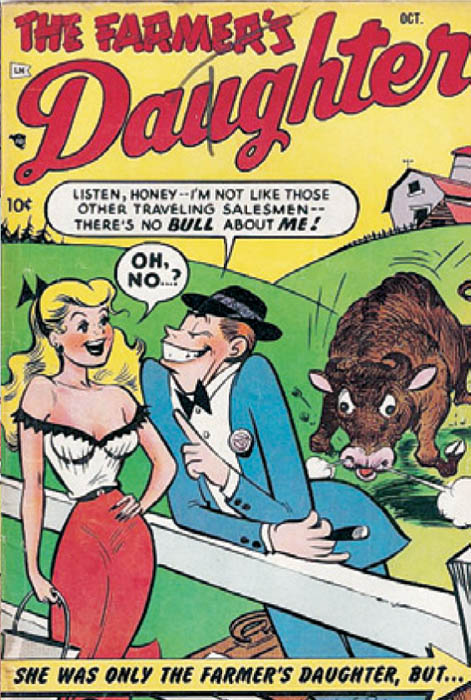
G.I. Jane followed the familiar pattern of stories where the women were more interested in fashion than fighting, while Stanhall’s The Farmer’s Daughter was quite racy for its time.
Milton Caniff’s Miss Lace from Male Call was highly popular “cheescake” for enlisted men during World War II.